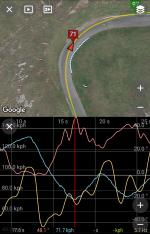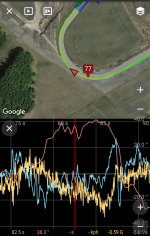Sochi
Well-known member
I use Calimoto on iPhone and it gave me this report after last ride. It shows 41 percent lean angle - usually my max (according to this app) is in 35-40 range. I don’t hang off the bike much on street so all tire is used edge to edge (have no “unused” stripe lol).
How accurate do you think this measurement of lean angle by iPhone? What do you think a real max lean angles on the street is? Just currious, that’s it.
How accurate do you think this measurement of lean angle by iPhone? What do you think a real max lean angles on the street is? Just currious, that’s it.
Last edited:



